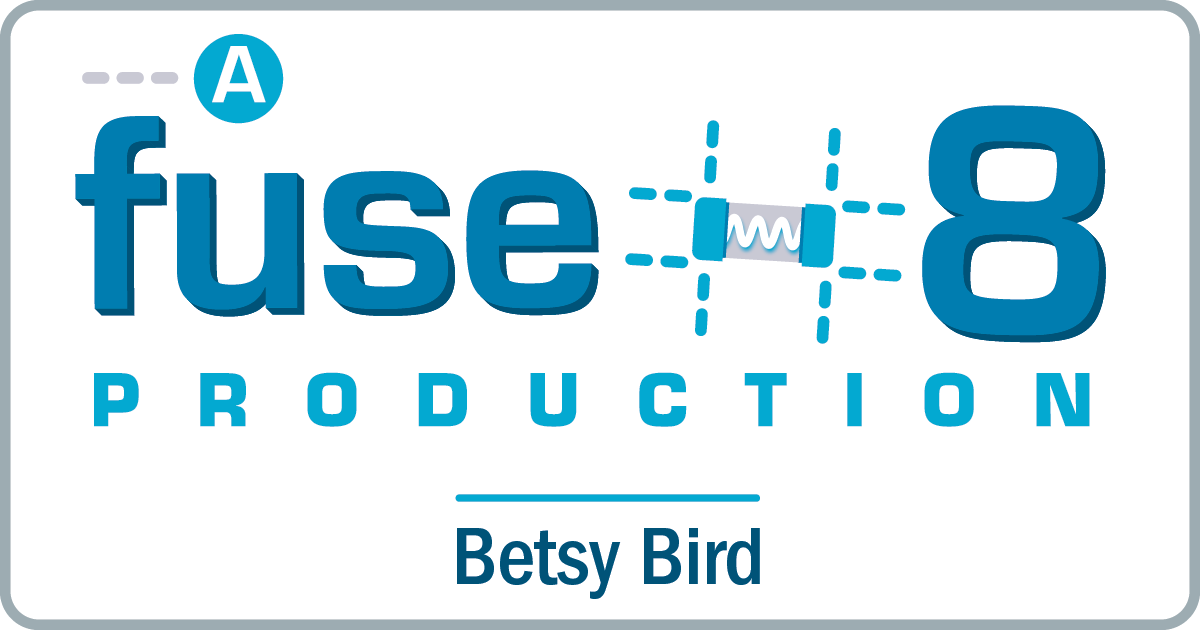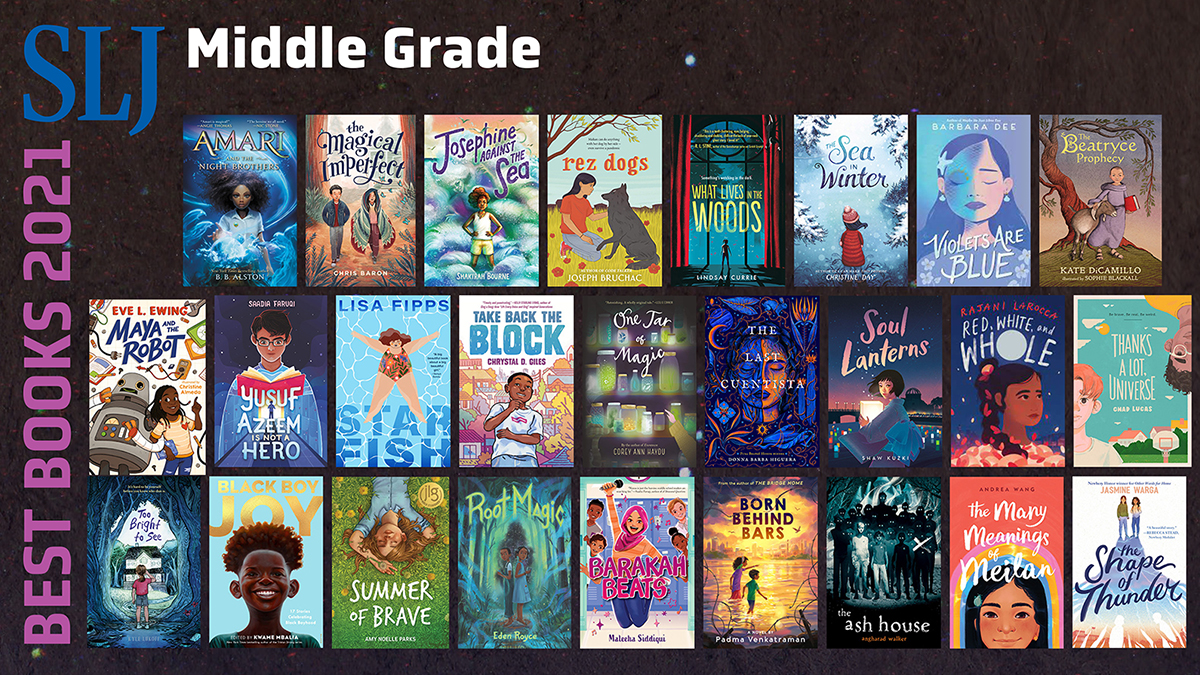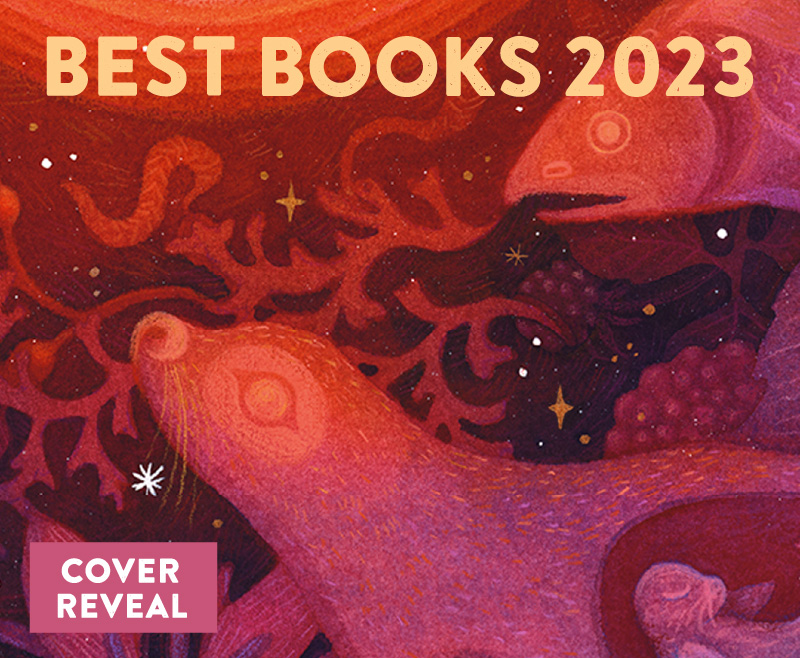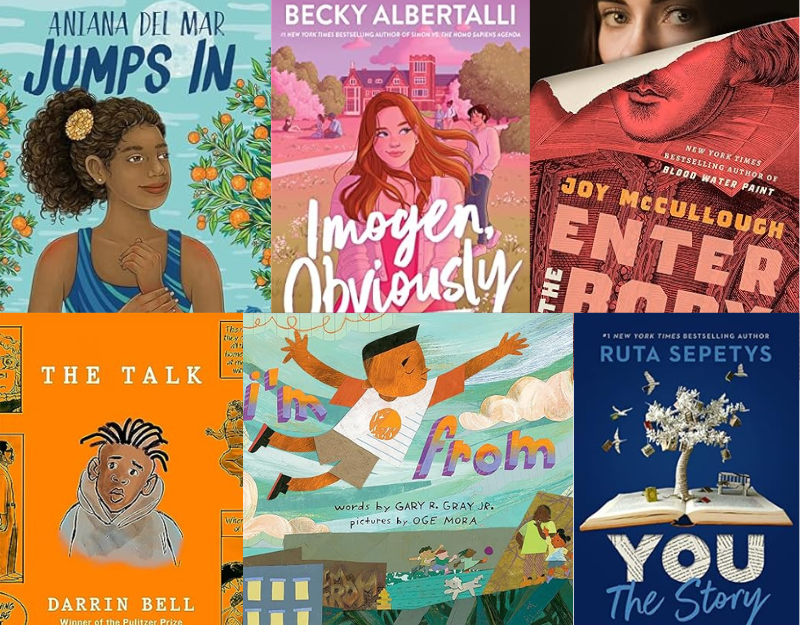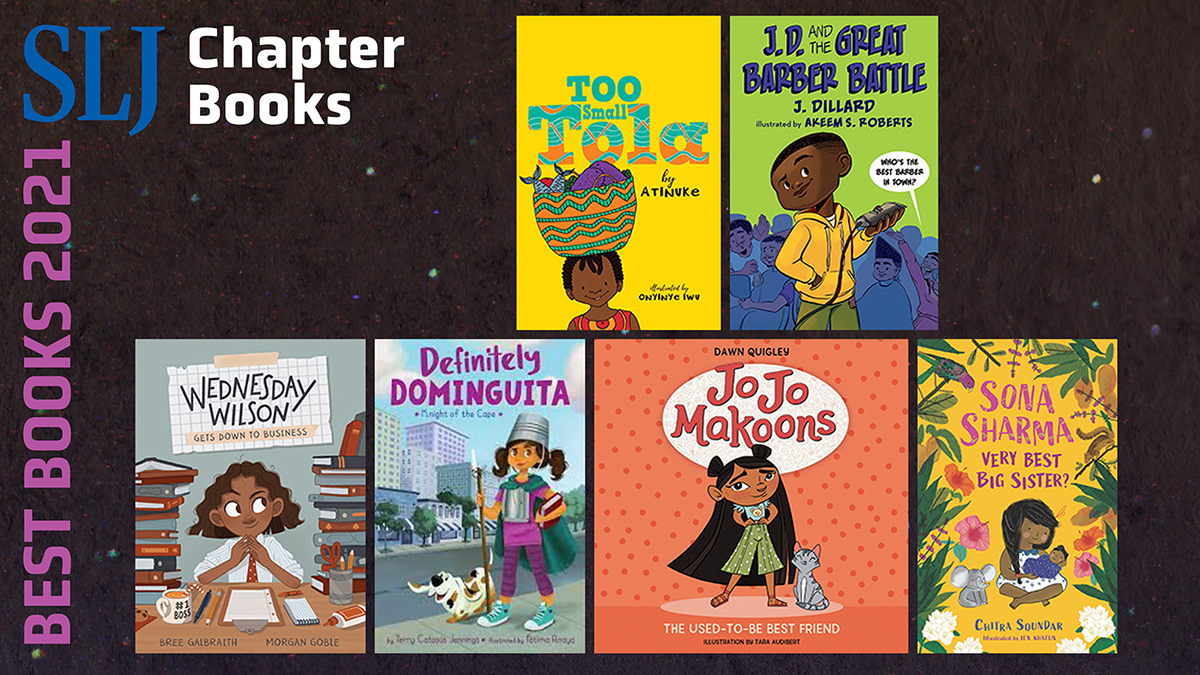“Complex social dynamics exist in the simplest of conflicts.” A Kyle Lukoff Interview on Sorry You Got Mad
I like to believe that in my small way, I am riding Kyle Lukoff’s coattails to fame by conducting this interview. In 100 years the name “Betsy Bird” will mean nothing, but I am entirely of the opinion that “Kyle Lukoff” may well be one of the few that can stand the test of time. He might disagree, but in him I see all the marks of greatness, and his latest two picture books are doing NOTHING to dissuade me from that notion. Penguin Young Readers has released Just What to Do, illustrated by Hala Tahboub, as the story of how to deal with grief, as of July 16th while I’m Sorry You Got Mad is coming out August 27th with art by Julie Kwon, and is about apologies done … poorly.
The publisher asks me, “Hey, do you want to talk to Kyle?” And I say, “Yes and please,” because I like both of these books very much, but I particularly had questions about the latter.
ADVERTISEMENT
ADVERTISEMENT
So we do.
Betsy Bird: Kyle! Good tidings. So let’s just dive right in. What we have here is a book of successive apologies [I’m Sorry You Got Mad], each a tiny bit better than the last. I feel downright ridiculous asking you this question but it seems like all a person needs to do is turn on a television or read the news to get what this book is saying, but was there a specific inspiration for this book? Or did you just come to it by culling it from the general ether?

Kyle Lukoff: The original inspiration for this book was that I had to fulfill a second contracted novel after Too Bright To See, and my imagination was throwing fistfuls of spaghetti against the walls of my brain to see what stuck. I thought about writing an entire novel in the form of apology notes, where we s l o w l y learn more about what happened, but dismissed that as too hard. About a year later, it was the summer of 2020 and I had nothing to do but go to protests, provide jail support, mope in my apartment, and write. That book-length apology floated back into my mind, and I realized that it was much better suited for the picture book form.
BB: You’re a former school librarian. You know the degree to which teachers love epistolary picture books. That had to be somewhere in the back of your mind as you wrote this, but you can’t separate the format from what makes the book work in the first place. Still, did you look to other epistolary picture books at all (or have them in mind) as you wrote this, or did you come to it cold?
Kyle: I’m actually not sure about the degree to which teachers love epistolary picture books! I will say that I mostly don’t like them. I didn’t want to write a series of letters that felt like static descriptions of past action. Or, rather, I didn’t want the letters to tell the story, I wanted a story to be told through the letters. It was also important that those letters match the structural elements of picture books that I find most effective–repetition that builds on itself, a careful scaffolding of information, and enough left intentionally unsaid that the illustrations had room to create a sometimes-separate, sometimes-parallel story all their own.

BB: And have you yourself ever been the recipient of a particularly bad apology?
Kyle: Oh, probably! Haven’t we all? But I’ve been wracking my memory and nothing is coming to mind. One that did stick with me as I wrote this book, though, was from my librarian days, when a kindergartner kicked another kindergartner in the crotch. I asked him why he did it, and he said it was an accident. I asked how the accident happened, and he said, “I didn’t think you were going to find out.”
It’s also worth noting that I picked the name Jack because I taught a lot of Jacks who often needed this kind of help. And Zoe because there was a person named Zoe that I hadn’t talked to in about three years, and figured that this book would help force me to repair that relationship before it came out. And it did!
BB: We would have also accepted “Darren” as the main character’s name. So there’s a mystery to this book that I particularly enjoyed. At the start we know that a crime (so to speak) has occurred but we have no idea why. The book is as much a mystery as it is anything else. Slowly the real story comes out in bits and pieces as Jack reveals more and more about himself. I know it’s not going to be marketed this way, but I love the idea of reading this to mystery-loving kids as well. Did Jack’s reasons change at all from your first drafts to the final product? And do you personally see this as a mystery at all, or is it just me?

Kyle: A sidenote to your mystery question is that, when I showed my dad this book, he got to page 4 and said, frustrated, “But we don’t know what happened!” I was like, yeah, Dad, that’s why you have to keep reading. But my father never reads fiction, only history and biography, and I guess I just found out why. I do see this as a mystery, but I fundamentally believe that all books are mysteries, because the whole point is to learn what’s happening and why. I might start talking about it more intentionally as one, though!
And as for Jack’s reasoning, that was an element that came through organically in the writing of it. When I sat down to write this book, I knew that there had been a conflict. I knew that it was a boy apologizing to a girl. And I knew that, while the boy was MAD, he was also hurting. But I didn’t know why. So I just started writing, and the first image that came to mind was a kid going hog-wild on another kids’ block structure, because that is something that happens all the time in elementary school–it’s fun to build and it’s fun to knock down and all sorts of complex social dynamics can come into play in those situations. So I figured, he knocked down her castle on purpose. I didn’t know why until I came to the letter where he explains why because, again, complex social dynamics exist in the simplest of conflicts, and that was the reason that made the most sense to me in that moment. That tends to be how I write both picture books and novels; I know the basic structure, but I let the final details and emotional motivations bubble up through my subconscious.
BB: I thought it was a nice touch how these letters weren’t being written in a vacuum. As Jack begins to confess more about his motivations, the teacher isn’t letting him just write these notes in a void. She’s actually paying attention to what he’s saying. We get the distinct sense that off-page she’s giving him continual advice on how to make better apologies. And when he brings up a case of other boys telling him what he should and should not do, you have that marvelous post-title sequence with those boys at the very very end. Did the teacher’s interactions change at all from your earliest drafts to the final product?

Kyle: I was going to say, “You know what, Betsy, this book changed very little in between the first draft and the final draft.” But I decided to go through my emails (spanning from July of 2020 to March of 2021) and it turns out that I didn’t include the teacher’s voice until after my editor had bought it and sent me her notes! I had sent my agent multiple drafts without her at all.
So, yes, her interactions changed from nothing at all to fairly significant, and the book is much stronger for it. For one, it keeps it from being too monotonous, and gives a little break in Jack’s voice for another one to come through. For two, it models helpful adult interactions that hopefully don’t come across as prescriptive. And, for three, it honors the many teachers that I’ve been lucky enough to work with and learn from over the years. Ms. Rice is named after one of my friends from my last job, who is the picture of calm competence in the classroom and an absolute joy to watch.
BB: And as far as I can tell we can never have enough books that model helpful adult interactions, as you say. Talk to me about Julie Kwon. She’s got this huge range and a fair number of picture books already under her belt. What I haven’t seen her do until now, though, is really lean into a humorous text. I feel like your manuscript opened her art up in new ways that I want to see a lot more of in the future. Were you aware of Julie’s work before this book? How do you feel about the final product?
ADVERTISEMENT
ADVERTISEMENT
Kyle: Ugh she is PERFECT. I always say that I can’t imagine any of my books with different illustrations, but it’s especially striking in this case. I wasn’t aware of her work before, but when my editor suggested her I was immediately enthusiastic. I remember feeling very apologetic about this book, because I think it might be a more challenging assignment than is common–SO MUCH of the story has to be told through the pictures, without real clues from the text. But when I saw some early sketches, specifically Jack sharpening his pencil and then standing angrily in front of Ms. Rice, I knew she had knocked it out of the park. The way she conjures up tremendously strong emotions in little bodies is incredible.
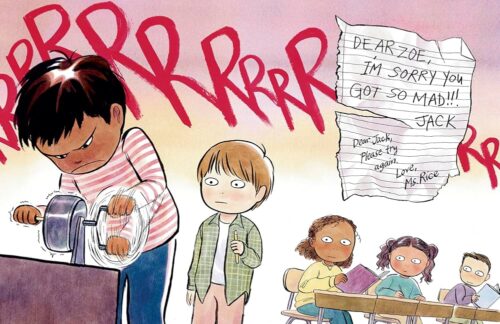
BB: Yeah, I’m firmly of the opinion that the expressions on the other kids’ faces as Jack sharpens are worth the price of the book alone. Finally (and this is a loaded question, but I do know what I’m getting myself into), what else do you have coming out?
Kyle: Well, in October my picture book Awake, Asleep will be released as a board book, and I’m super excited about that since I always pictured it in that format. Next year sees the release of my third novel, called A World Worth Saving (2/4/25), a fantasy/adventure starring a 14-year-old Jewish trans boy and a robust cast of human and non-human characters. I also have two more picture books next year of the rainbow persuasion, specifically a Little Golden Book about Pride, and a nonfiction history picture book called Are You A Friend Of Dorothy? There’s some more after that, but those all have to be under my proverbial hat for now.
Let me be clear. It is not a good picture book author conversation until the subject in question says, “Ugh she is PERFECT” at some point. As such, this discussion is now, officially, also perfect. I want to thank Kaitlin Kneafsey and the team at Penguin Young Readers for offering this interview up. And, of course, I want to thank Kyle (who is not exactly filled with spare time) for talking to me today. If you’re looking for his latest, Just What to Do came out July 16th and I’m Sorry You Got Mad is out August 27th. Find them!
Filed under: Interviews
About Betsy Bird
Betsy Bird is currently the Collection Development Manager of the Evanston Public Library system and a former Materials Specialist for New York Public Library. She has served on Newbery, written for Horn Book, and has done other lovely little things that she'd love to tell you about but that she's sure you'd find more interesting to hear of in person. Her opinions are her own and do not reflect those of EPL, SLJ, or any of the other acronyms you might be able to name. Follow her on Twitter: @fuseeight.
ADVERTISEMENT
ADVERTISEMENT
SLJ Blog Network
One Star Review, Guess Who? (#214)
Exclusive: Betty & Veronica Jumbo Comics Digest #333 | Preview
Goodbye for now
When Book Bans are a Form of Discrimination, What is the Path to Justice?
RA Tool of the Week: 3 is the Magic Number, well technically 9 is . . .
ADVERTISEMENT

